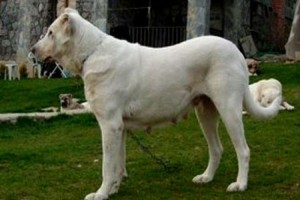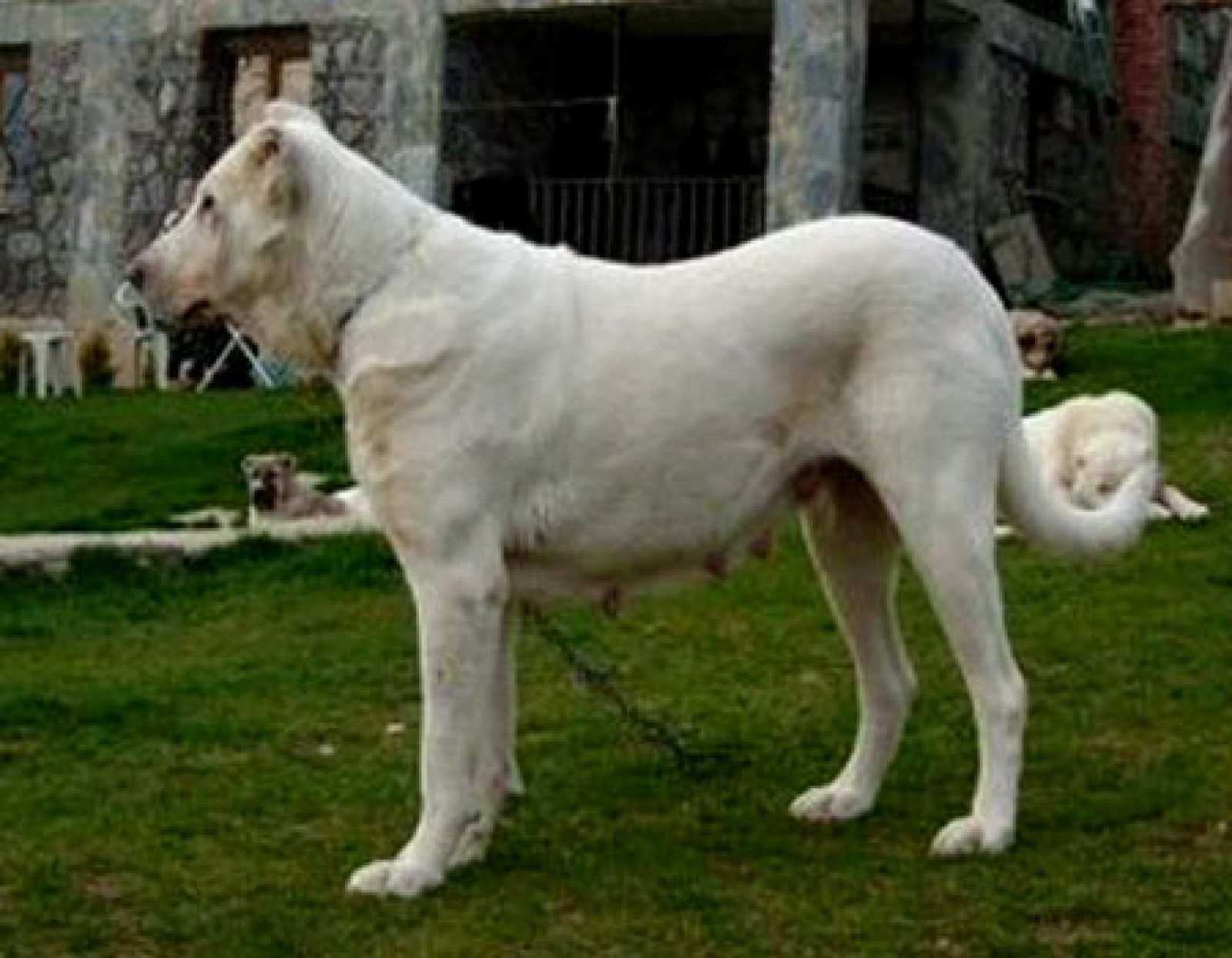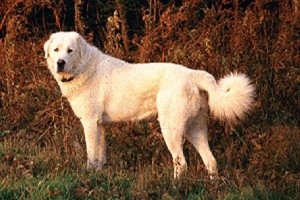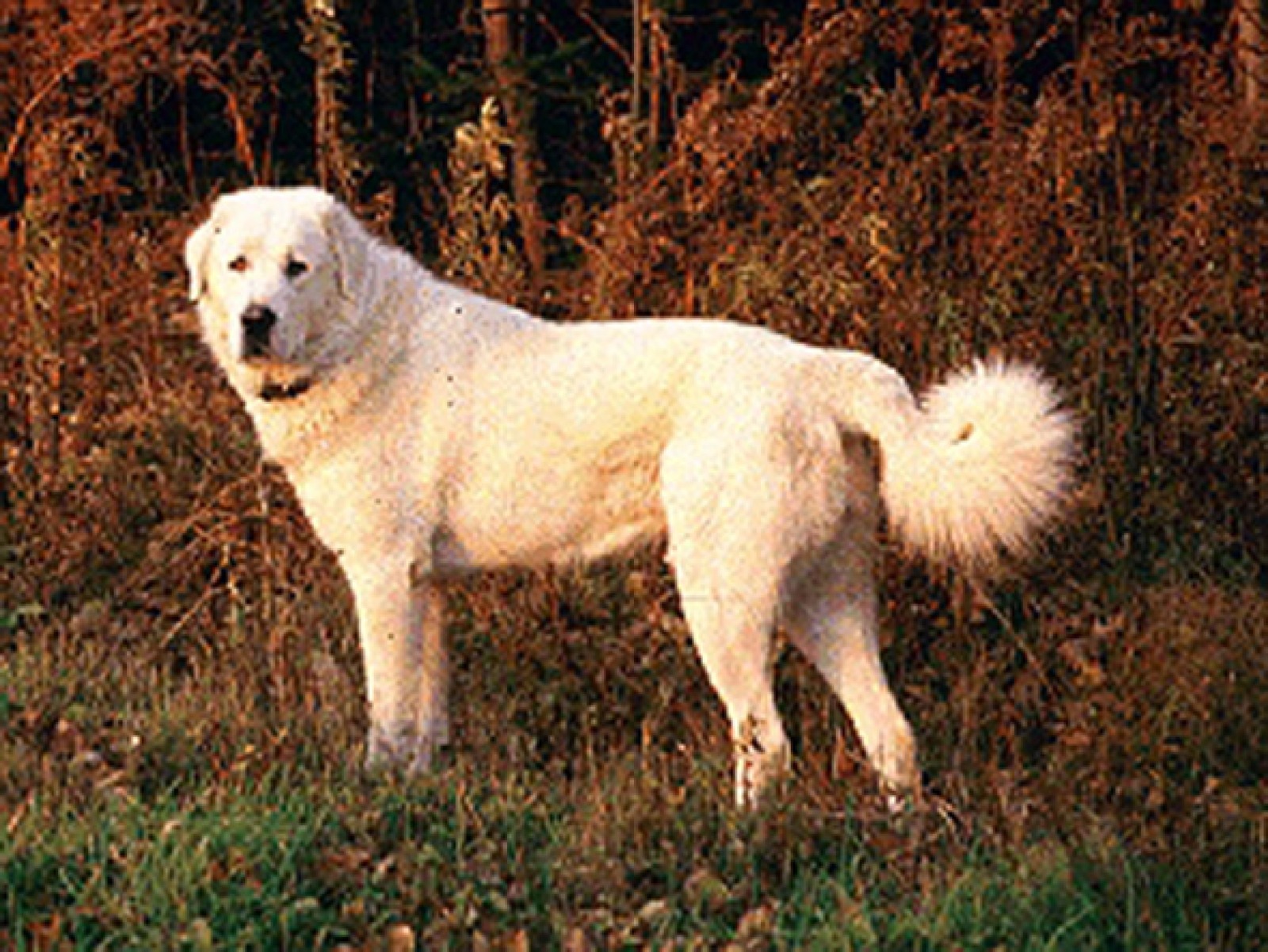Armenian Gampr
A Brief History of the Armenian Gampr
Relevant Links: Armenian Gampr Club of America Excellent history of Armenia are 90,000 years old (Ney, n.d.), under the current city of Yerevan, many early peoples were nomadic, and wealth was measured in possessions, including livestock. A dog such as the gampr is invaluable in protecting ones possessions, particularly livestock. Even now, it is common knowledge among owners of sheep or goats and livestock guardian dogs that a good dog will save the owner thousands of dollars in prevented losses.
During the thousands of years of nomadic herding and trading, a good dog could easily have meant the difference between life and death. According to early petroglyphs beginning ca. 15,000-12,000 in the Armenian highlands, specifically “at Ughtasar and on the Geghama mountain range, up to 20% of the carvings resemble the modern gampr, while others show a remarkable diversity of dog that no longer exists.â€(Ney, n.d.) The continued existence of domesticated animals at that time was most likely restricted to those which were particularly useful and relatively self-sustaining. Archeological records of early dogs are somewhat concurrent and very widespread. Many archaeological finds indicate that the “first†domesticated dog came from several origins.
One fairly recent find is of two skulls that are quite similar to the gampr and other central asian shepherd breeds, and it is postulated that this may be the first link between wolves and ancient dogs (Viegas, Jennifer, May 2003). Russian scientist Mikhail Sablin reported that the two dogs found were very similar to the wolves in the area at the time, but had shorter snouts, wider palates, and measured about 27.5 inches at the shoulder, which is about average for the gampr. Found near Bryansk, which is at the westernmost tip of the Russian Federation, the dogs were in a cave at the edge of the broad plain stretching through the Ukraine, northeast through Poland and south to the Caucasus mountains, Georgia and Armenia. The skulls are reported to be about 14,000 years old (Viegas, 2003).
Another possible origin of the domestication of the dog is southeast Asia. Extensive genetic mapping indicates a genetic “age†of the domestication process, 12,000-15,000 years old. A landmark study lead by Peter Savolainen and involving a team of scientists from several continents organized mitochondrial DNA clades from modern dogs into 5 main groups. Since ninety- five percent of the dogs studied were from three clades, Savolainen’s team looked to the remaining clades which included the first three but had more genetic diversity, indicating a longer age of genetic development. The greatest differences in mitochondrial DNA were apparently from southeast Asia, indicating to the analysts that this was where the original domestication process had begun (Savolainen et al, November 2002).
Since the Savolainen study was published, however, further study has been deemed necessary as the inherited genetic markers were strictly matrilineal (Verginelli, Fabio et al. August 2005) and did not disallow for included genes from males. Also, “loss of genetic diversity is clearly evident when comparing the Late Pleistocene/Early Holocene PICs with extant Italian/French wolves…[which] suggests that caution is necessary in drawing historical inferences from modern population data.†(Verginelli, 2005). Furthermore, cultural verbal histories indicate that allowing female dogs to breed to native wolves has been practiced for thousands of years in the Caucasus mountains (Ney, n.d.) The gampr and other closely related breeds are a product of the necessity of survival, rather than the desire for a specific possession, and therefore would have been subject to manipulation only to increase functionality. However, the influx of wolf characteristics was necessarily limited, as the shepherds needed a dog which was more powerful than a wolf, both physically and mentally (Kurrikov, Dovlet, n.d.), balanced by a strong sense of independence.
Modern dog breed history is easier to trace, as there are ample records of the flow of humanity and written histories to match. Dogs are classified into groups, including spitz, sight hounds, pariah, scent hounds, and molossers among others. Molossers are also commonly known as mastiffs and include, among others, the English Mastiff, developed over 2000 years ago in England. The dogs represented by the skulls found in the cave near Bryansk, in western Russia, were molossian-type dogs. It seems preposterous to compare a little French bulldog to an Armenian gampr, and say that the little bulldog descended from the same ancestors, nearly identical to the modern gampr, but all evidence indicates that to be true. Breeders of modern show dogs have a fairly high level of predictability when expecting a litter from known parents (Whitney, Leon. 1971), but the genetic variability inherent in the gampr is much less refined. It is more likely that a litter of gampr puppies will resemble the grandparents and great-grandparents than the sire and dam (Ney, n.d.), which is actually a factor that has frequently aided the perseverance of the gampr in its native country.
Thousands of years of natural selection has given the gampr as much refinement as is useful, and no more. This genetic heritage includes the ability to produce any characteristic found in the other molossian breeds, and occasionally there will be a puppy that seems to have come from another breed, not just another set of parents (Ney, n.d. and Qadirie, Rasaq, n.d.), but this is a useful The Armenian Gampr dog today has more similarity to the historical origin breed of all mollosser type dogs than other more well-known breeds. Historical evidence shows the development of livestock and companion dogs to have been in existence on the Armenian plateau before other ancient civilizations.
Anthropological findings indicate that the current gampr type became what it is today at least 3000 years ago (Richard Ney, n.d.), and as the breed was developed out of necessity and continues to be a necessary part of human survival in its native area, the gampr has retained a surprising amount of its original characteristics. Various central Asian countries have closely related strains of the original shepherds™ dog. However, some of the other breeds also have had genetic manipulation in the last 200 years, which in most cases has meant the loss of the primitive soundness and depth of instinct that remains today in the gampr.
Located in a very fertile zone, at the crossroads of travel between ancient Persia, Asia, and Europe, the Armenian plateau has given rise to some of the earliest milestones of civilization. Armenian innovations and products have been at the forefront of the development of humanity, and many steps of human progress appeared first here. Armenia was the first country to define the zodiac, adopt Christianity, use astrology, create an astronomical observatory and a calendar with a 365-day year, and the Genocide photos Ancient Astronomy characteristic in a country that has been beset by wars since pre-history, famine, earthquakes, and even the first genocide of the twentieth century, when three-quarters of the Armenian race were annihilated by the Ottoman Empire (Morgenthau, Henry. February, 1920) This mass genocide, occurring from 1915 though 1923, devastated the Armenian culture and weakened the ancestral link to the gampr dog. Already for the previous one thousand years, Turkish raiders had been consistently taking the dogs as war booty (Ney, n.d.), and even though the historical borders of Armenia had incorporated what is now a large part of northeastern Turkey, current Turkish nationalism is now making an effort to consolidate recognition of descendants of the Armenian dogs as their own Kangal-Sivas and Akbash. During the genocide of 1915 and for many years after, most of the best remaining dogs were taken to the newly formed Union of Soviet Socialist Republics (Ney, n.d.), and became a main portion of the founding of the Red Star breeding program, which has resulted in the recognition of the Caucasian Ovcharka, or Kavkastkaya.
The Soviets originally intended to breed a police dog, and began introducing other breeds in an effort to make the independent-minded native livestock guardian more biddable, and more likely to attack on command. The “modern incarnation of the Russian show type also has some St.Bernard, Sarplaninac, Leonberger and Moscow Watchdog blood running through its veins, courtesy of ambitious Soviet breeders…â€(Wolf, 2007). As they are, the gampr and other native guardians, such as the koochee of Afghanistan, are unlikely to actually physically attack without a direct unmistakable threat to their family, human or four-legged. Since the dissolution of the Soviet Union, the trend has been to breed the ovcharka larger and more defensive, which has created serious genetic complications for the breed. Even though there are some definite differences between the native dogs and the modern ovcharka, the ovcharka has the recognition of the Federacion Cynologue Internacional, an international dog breed club, and therefore the native breeds are not valued as such, but are pressured to prove themselves to be ovcharka. This poses a threat to the genetic soundness of the gampr, as the pressure to become a more widely recognized dog has the potential to disrupt the fine-tuning of thousands of years of natural development (Qadirie, Rasaq, n.d., and Trut, 1999).
When analyzing characteristics of domesticated animals, it becomes apparent that the process of domestication is linked to certain physiological traits (Trut, Lyudmila N., March-April, 1999) which progress in a surprisingly consistent manner for all species. Fifty years ago, Dr. Dmitry Belyaev and his team at the Institute of Cytology and Genetics in Siberia pioneered a strict study of domestication in foxes. Beginning with 130 foxes, the team permitted only specific, timed, consistent interactions with the captive foxes, and allowed only a small percentage of them to be bred. Selection was based only on friendliness, and disregarded any other means of distinguishing those which were allowed to reproduce. A remarkable progression of developmental and physiological changes were recorded by the team, even after the death of Dr. Balyeav. With selection being based only on friendliness, the speed of the domestication process was dramatically increased, accomplishing inadvertently various developments in fifty years which had never been done, even with intention of doing so, in the history of the farm-fox business (Trut, 1999). Apparently the selection factor of friendliness is polygenic, bringing with it certain traits which can be observed in many other breeds of livestock.
Three main physiological traits expressed themselves early and consistently. White pigmentation on first the head then the feet, flopping ears, and curling of the tail were all evident in the early stages of domestication. Developmental changes were remarkable as well. Dramatically, the basal levels of corticosteroids in the blood plasma of the domesticated foxes had dropped to slightly more than half the level in a control group by just 12 generations, and within another six generations had halved again (Trut, 1999) Lower corticosteroid levels indicate a lower level of fear, and also less energy usage in order to produce the fear reaction. With this comes a higher level of seratonin, which in turn affects neonatal development. These changes affect the timing of certain growth markers, such as earlier eye opening and response to noises and the delayed onset of the fear response to unknown stimuli. (Trut, 1999).These in turn affect an animals ability to be aware of and to accept interaction with humans. Other significant early changes in morphology were differences in skull proportions, more variety in fur color, and changes in size. Remarkably, these characteristics are all evident in the modern gampr, but the gampr appears to have stopped its domestication at that evolutionary stage; the following changes in the foxes, which are more similar to other modern dog breeds, are not particularly evident in the gampr.
As domestication progresses, selection being based on a criteria arbitrarily selected by the desire of humans rather than functional need, many non-productive traits crop up. The Belyaev team began to see malformations of the jaw structure, short legs, bowed legs, extreme desire for closeness with humans, and less difference in size between the males and females (Trut, 1999). If the foxes had been living in a situation where their survival, and therefore ability to reproduce, depended on being physically functional, it may be safe to assume that some of these less desirable characteristics would not have become prevalent. However, since the study illustrates the connection between friendliness and these morphological differences, one could also surmise that the domestication of the foxes in a more normal environment would have also been halted or dramatically slowed at the point of non-functionality. The vast majority of modern breeds of dog, particularly those recognized by AKC and primarily judged by a bench standard, have many similarities to the foxes at the end of the Belyaev study. Genetic defects, which make survival without the intervention of a veterinarian and constant care and companionship, have become more and more prevalent. Luxation of the patella in many small breeds is fairly common, as is displacement of the cornea in bull terriers, epilepsy in Labrador retrievers, weepy eyes in chows, incontinence in the bichon, heart murmers in bulldogs, and among the worst, absolute incompetency to reproduce in English Bulldogs.
All of the breeds above were at some point more functional and less prone to genetic issues, but the efficacy of human manipulation for the sake of our own imaginary needs, rather than actual realistic needs, has pushed many breeds to brink of disaster. In just the last one hundred years, the Russian Ovcharka has been “developed†enough to cause it problems, particularly poor hips and unreliable temperaments. A dangerous trend for dogs in Central Asia is the development of dog fighting as a sport. Historically, a nomadic tradition allowed for two dogs to be pitted against each other only long enough to assess which dog would declare dominance over the other, and no longer. There was very little risk to the dog (a valuable and necessary asset), and the contest rarely involved more than a wrestling match. Usually, showing teeth and attempting to bite the other dog was a signal of inferiority, because the contest of wills was more important: a dog that could dominate a situation, particularly with marauding wolves, without risking bodily injury was an invaluable resource. If a dog was afraid enough to resort to biting, that was a sign of mental defeat before possible physical defeat. During the last twenty years, the difficulties posed by widespread poverty coupled with a reduced reliance on tradition, have pressured many people into pitting their dogs against each other for money.
In some areas this is the easiest and the only opportunity to make money quickly and relatively easily. Even in more developed areas in Russia it is a somewhat common and lucrative sport. These modern dog fights have deviated from tradition, and it is now common for dogs to inflict some amount of damage on each other. This has resulted in a trend away from the inherent use of the breeds as they were developed to be. In the United States dog fighting is prohibited, as it is in many other countries, but the excitement and allure of a dog that is tougher than all the rest is still attractive to many people. The danger to the breed is that the calm, levelheaded self-determined intelligence may be lost, and a new version of the breed created that is less predictable and a lot less useful.
In 1998 a man named Tigran Nazaryan in Armenia wrote software for a database of the gamprs he had knowledge of in Armenia, and it is posted at www.gampr.net. Tigran and a veterinarian friend by the name of Avetik arranged for the transportation of several dogs to the United States, in order to establish the breed here as well. Some of the dogs were lost, and a few were bred. There are now at least fifteen gamprs in the United States, mainly in California. The Armenian Gampr Club of America, www.gampr.org, was organized in an attempt at preserving the breed here in the U.S. This comes at a time when new regulations are coming into effect that require any dog that is not a registered breeding dog of a recognized breed in a recognized club, actively being shown, become spayed or neutered (Los Angeles Animal Services, 2008). Coincidently, the first county to adopt the new regulation was Los Angeles County, the very same county where most of the Armenia-registered dogs happen to be living.
The Armenian gampr is still the breed it has been for thousands of years. In order for the breed to maintain its integrity as a useful, reliable guardian, strict and thorough measures must be in place to assure correct breeding practices. Outside of the native country, any gampr is at risk to a variety of misuses and misrepresentations. Armenia is a small country where there remain local shepherds in the hills, eking out a living the way their ancestors had for thousands of years. Many travelers to the cities never even know that the dogs exist, including Armenians who visit their homeland regularly. The native dogs and shepherds live the way they always have, and in so doing will hopefully be able to maintain the integrity of the breed that began 15,000 years ago. The goal of the AGCA is to maintain the gampr breed in its most pure, original manifestation as the ideal livestock guardian and human companion, as physically and mentally sound as it was for the last several thousand years.
References
Bedrosian, R, (1979) The Turco-Mongol Invasions and the Lords of Armenia in the 13-14th Centuries. Columbia University dissertation. Retrieved April 29, 2008, from http://rbedrosian.com/atmi3.htm Los Angeles Animal Services. (March 6, 2008) AB1634. http://www.cahealthypets.com/ca-healthy-pets-ab-1634-home.php
Morgenthau, Henry. (1920, February 28) Shall Armenia Perish? The Independent, New York. Retrieved April 24, 2008 from http://www.armenian-genocide.org/2-28-20-text.html
Ney, Richard. (n.d.) Armenian Shepherds: The Gampr Deified as Aralez. Tour Armenia. Retrieved February 2008, from http://www.tacentral.com/nature/fauna_story.asp?story_no=2 Qadirie, Rasaq. (n.d) Introduction Part 4. Retrieved April 24, 2008 from http://www.koocheedog.com/intro4.php
Savolainen, Peter, Ya-ping Zhang, Jing Luo, Joakim Lundeberg, Thomas Leitner. (November 2002) Genetic Evidence for an East Asian Origin of Domestic Dogs. Science 22 : Vol. 298. no. 5598, pp. 1610 - 1613. DOI: 10.1126/science.1073906. Retrieved April 24, 2008 from http://www.sciencemag.org/cgi/content/full/298/5598/1610
Trut, Lyudmila N., (1999, March-April) Early Canid Domestication: The Farm-Fox Experiment, American Scientist, 87: 160- 169.
Viegas, Jennifer. (2003, May) Earliest Domesticated Dogs Uncovered. Animal Planet News. Retreived April 20, 2008, from http://animal.discovery.com/news/briefs/20030505/earlydog.html
Verginelli, Fabio et al. (2005, August) Mitochondrial DNA from Prehistoric Canids Highlights Relationships Between Dogs and South-East European Wolves. Molecular Biology and Evolution 2005 22(12):2541-2551
Whitney, Leon F. (1979) How to Breed Dogs. New York: Howell Book House, Inc. Source: http://www.gampr.org/History.html






